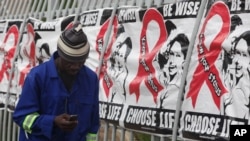Progress in reducing new HIV infections in adults has stalled, and is even on the rise in some regions of the world, the United Nations AIDS agency warns.
In a report on the epidemic, UNAIDS notes that infections among adults and children globally have been reduced by 40 percent since the peak of 3 million in 1997. And, while significant progress in stopping new cases among children is continuing — with a drop of more than 70 percent since 2001 — the decline in new cases among adults has stalled since 2010, remaining steady at an estimated 1.9 million for five years.
"We have a five-year window of opportunity,” said UNAIDS Executive Director Michel Sidibe, in pressing the world to scale up prevention efforts. “If we miss this next five years, we will have a rebound in this epidemic. We will have resistance, and we will not be able to control the epidemic and make sure that we end it by 2030."
The report finds Eastern Europe and central Asia have seen a 57 percent increase annually in new HIV infections between 2010 and 2015; more than 80 percent of the region's new HIV infections in 2015 were in Russia.
While these numbers are dramatic, most of the new cases are in sub-Saharan Africa, says UNAIDS chief of prevention Karl Dehne.
"About half of all infections are in eastern and southern Africa alone,” Dehne said. “So, even if there is a small decline there, that does not mean that we have already won the battle. We need to do much more there."
The report says young women in sub-Saharan Africa are particularly at risk of HIV-AIDS, with 75 percent of new infections among adolescent girls between the ages of 10 and 19.
Other vulnerable groups, it says, include gay men and other men who have sex with men, sex workers and their clients, transgender people, injecting drug users and prisoners.









